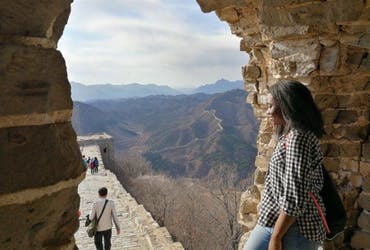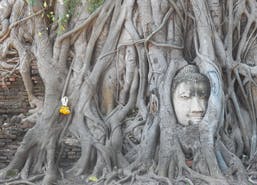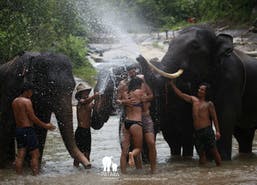Onsen Hot Springs
Onsen hot springs have soothed the Japanese body and soul for at least two thousand years. Blessed with over 3,000 named hot springs, the Japanese archipelago has every type of hot spring bath, from modern resort complexes to remote rock pools in the mountains. Yet they all have a common purpose – to soothe away your aches and pains, and to relax your mind.
First used by injured warriors to heal their wounds, hot springs became important because of the significance of cleanliness in Japanese culture. In medieval times, inns were built for samurai, feudal lords and their retinues visiting hot spring locations. For ordinary people, visiting an Onsen was like taking a holiday.

As Japan opened to the outside world in the Meiji era and industrialization started, Onsen began to attract people from the expanding cities and western-style hotels were built. Onsen still attracts a large percentage of all domestic tourists in Japan, who travel on short packages to soak in the thermal waters and enjoy the local cuisine.
Onsen differs from hot springs in other countries in several respects. First, the water is usually hot, around 37- 42 degrees Celsius is average. The baths where you soak can normally accommodate ten to twenty people, though many are smaller and many larger. Baths are often built from stone or sometimes wood – Hinoki cypress is a prized material.

The other major difference is that clothing is not allowed and bathers are naked. Until the early part of the 20th century, most onsen were mixed, but gradually the number of mixed onsen has declined under pressure from foreign missionaries. Today only a tiny minority of Onsen offer mixed bathing and they tend to be the more remote and secluded ones.
Visiting an onsen is a must on any visit to Japan. There is simply nothing like it and most visitors become addicted! Even if you feel shy about being naked in public, it is well worth trying.

Onsen etiquette:
Changing
The bathing area will normally have Noren curtains over the entrance – red for women,blue for men. Inside you will find the changing area, with shelves and baskets for your clothing. Remove your clothes, place them in the basket and keep with you just your small white hand towel.
Washing
Move to the washing area. Take a small stool and bucket and find a free space in front of the taps and showers. Sit on the stool and use your white hand towel to wash yourself, using the supplied shampoo and liquid soap. If using the shower attachment, make sure not to splash your neighbour! Rinse thoroughly – you will be very unpopular with your fellow bathers if you make the bath water soapy!
Bathing
After rinsing thoroughly, move to the bath of your choice. Test the temperature with a finger or toe, and slip slowly into the water. Smaller onsen may have a cold tap which you can use to cool the water if it is too hot. But use it carefully as fellow bathers may like the hotter water. The water may be hotter than most baths you are used to, but if you enter slowly and sit still, you will soon feel the soothing action of the hot water.
You can get out, wash again and re-enter the bath as many times as you like.
Seven golden rules of the onsen
1. Do not wear any clothing, even a swimsuit, in the bath
2. Remove jewellery as it may discolour in the mineral water
3. Wash and rinse thoroughly before getting into the bath
4. Keep your small towel out of the water
5. Do not jump into the bath
6. Avoid swimming or splashing
7. Do not pull out the plug!






